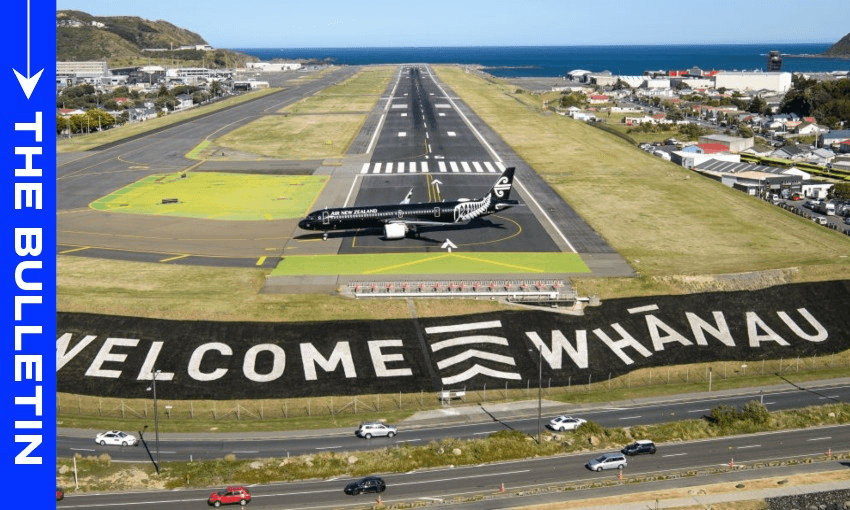Most visitors to New Zealand will be forking out $100 to enter the country, evoking the ‘high quality’ tourist debate of 2022, writes Stewart Sowman-Lund in today’s extract from The Bulletin.
To receive The Bulletin in your inbox every weekday morning, sign up here.
Tourist levy to rise
International tourists will have to pay a little more to visit New Zealand, with the government upping the cost to enter the country by close to 200% from October. As Stuff’s Glenn McConnell reported, the International Visitor Levy – a tax that applies to most tourists visiting New Zealand – will rise from $35 per head to $100. That means a family of four would be required to pay $400 as opposed to $140, worrying some in the tourism sector that it could deter visitors from coming at all. As MBIE explains, the levy goes toward funding and maintaining projects that are commonly used by international tourists – that includes simpler things like upgrading information centres or more complex issues like supporting conservation efforts.
Tourism minister Matt Doocey said that tripling the levy would mean allowing for the tourism sector to grow and he was confident it won’t dent the number of arrivals.
The question of ‘high quality’ tourists
That’s not the view shared by the chief executive of Tourism Industry Aotearoa, Rebecca Ingram, who told the Herald the increased levy could mean 48,000 fewer visitors – a loss of $273m in visitor spending. “So far, we’ve received no signal from government on its investment plan for the increase in funds from the levy,” said Ingram. The Board of Airline Representatives expressed similar concerns, saying that the outlook for inbound tourism was “soft” with just a 2% increase expected on the number of flights into New Zealand.
Increasing the levy won’t stop all, or even many, tourists from visiting New Zealand – but it could change the types of tourists that choose to come. In 2022, reported The Guardian, former tourism minister Stuart Nash made headlines after saying he wanted to target “high quality” tourists and not those who “travel around our country on $10 a day eating two-minute noodles”. Clearly, high spenders won’t care if it costs more to enter the country (Nash had also proposed raising the visitor levy to $200 while in government, reported Stuff’s Andrea Vance in 2022). This piece in The Conversation looked at the tension between whether we should be targeting mass tourism or just the big spenders, noting that openly targeting “high-value visitors” by increasing the levy suggested other visitors are low-value. “If the essence of manaakitanga is that people arrive as strangers but leave as whānau… the authenticity of New Zealand’s overall messaging needs to be clear”.
A change of heart
The visitor levy is just five years old, having been introduced by the Labour government in 2019 – just before borders closed and international tourism came to a halt for about two years. At the time, reported the Herald’s Lincoln Tan, the then-opposition National Party was critical of the “tax”, saying it had dampened the number of visitors to the country. “We’re already seeing the consequences… with falling numbers from major markets like India and China,” said Todd McClay in October 2019. As part of the party’s 2020 election proposal, reported RNZ here, the party also wanted to “freeze any new charges or levies for tourists”.
The party had previously viewed the levy as something of a slush fund, explained Newsroom’s Andrew Bevin summarised, though it’s clearly had a change of heart since entering government. Tourism minister Matt Doocey said funds gathered via the levy allowed the government to “react nimbly” to issues facing the sector, but didn’t currently raise enough money to cover all costs. Speaking to Newstalk ZB’s Heather du Plessis-Allan yesterday, Doocey said the $100 levy was less than 3% of a visitor’s total spend while in Aotearoa and would mean “delivering a better product” for arrivals.
What about a bed tax?
Part of the reason a visitor levy was introduced in the first place is that while tourists contribute to our overall tax take via GST on purchases, they otherwise got a pretty cheap ride when it came to their contributions to things they used. Another solution to this problem that is routinely floated is a so-called “bed tax” a levy charged per night for those using accommodation providers like hotels and Airbnb. Proposals for a bed tax tend to be regionally-focussed, such as in Queenstown where there has been support from both council and ratepayers for a number of years for a targeted 5% charge on accommodation. Crux reported last year that despite local support, then-opposition leader Christopher Luxon had ruled out supporting the idea. At the recent local government conference in Wellington, reported RNZ, a number of councils also expressed a desire to be able to implement new levies.
So far, the government has appeared cool on the idea. However, reported Newsroom’s Tim Murphy earlier in the year, Auckland is betting on it becoming a reality across the country. The council had previously implemented a targeted accommodation rate charged on hotels rather than tourists, prompting a court battle that went all the way to the Supreme Court. Mayor Wayne Brown wants a new nationwide bed tax of 2.5% and, he claimed, the prime minister Christopher Luxon was “gung ho” for.
